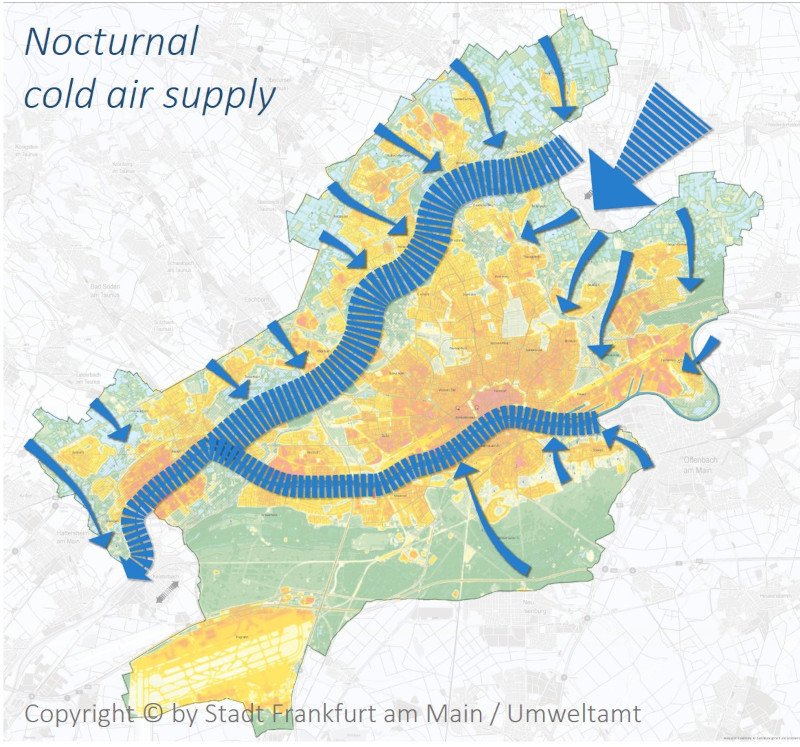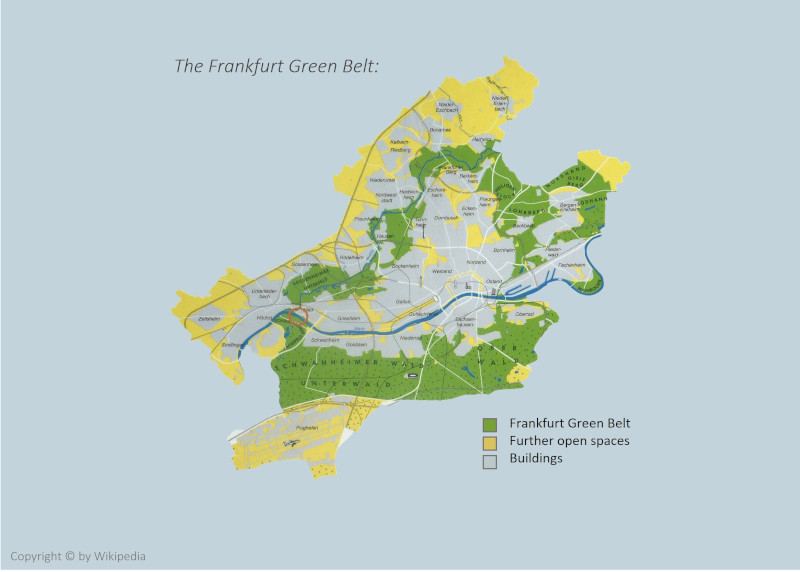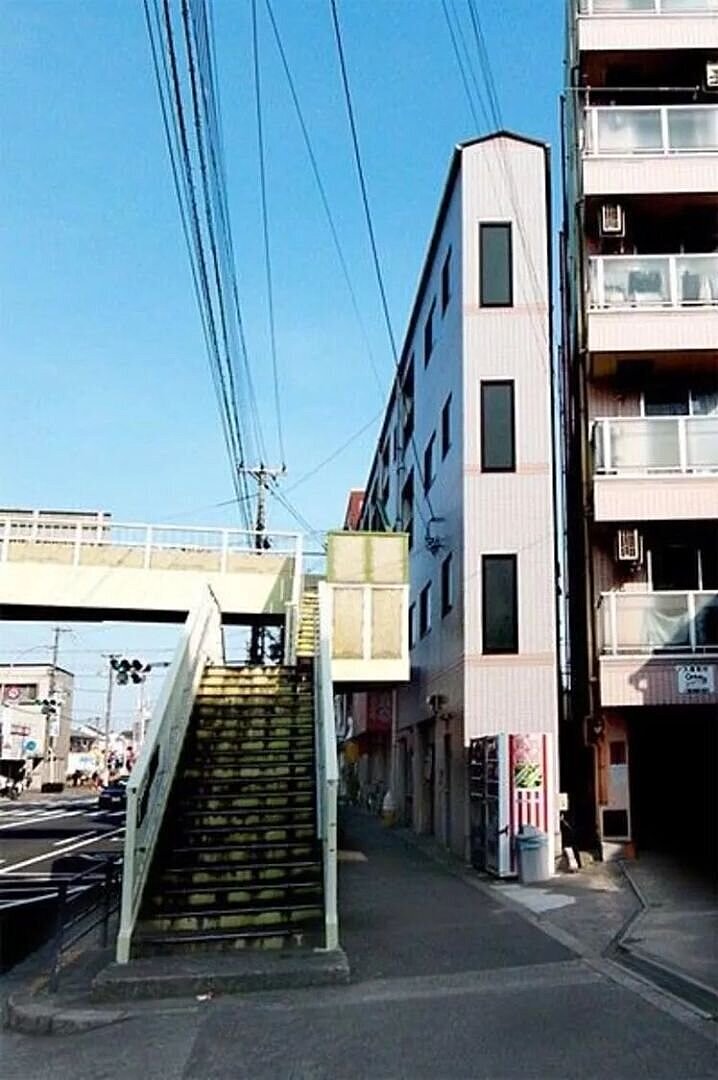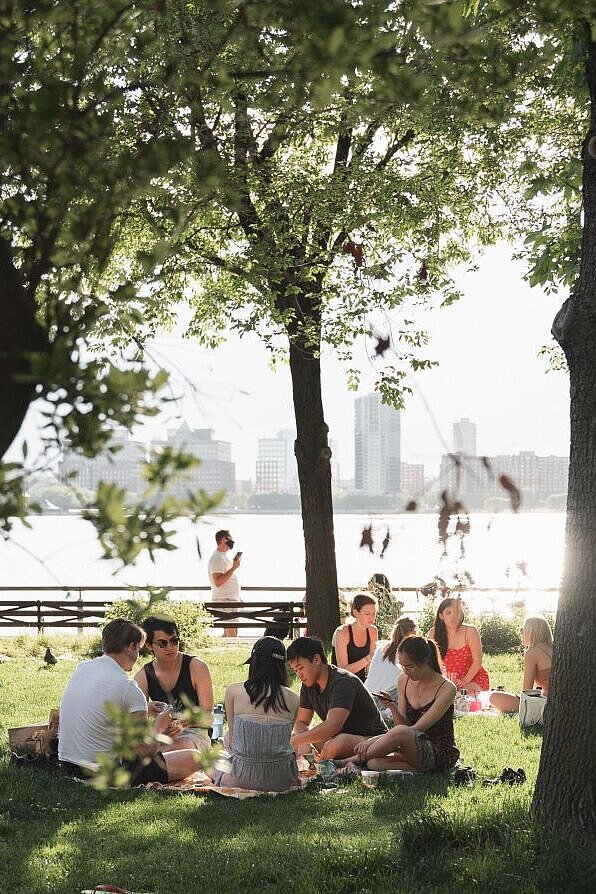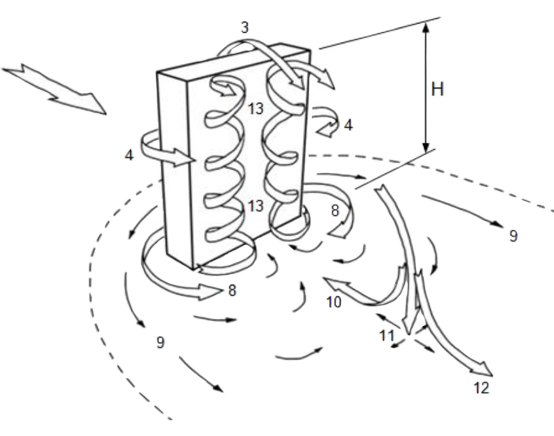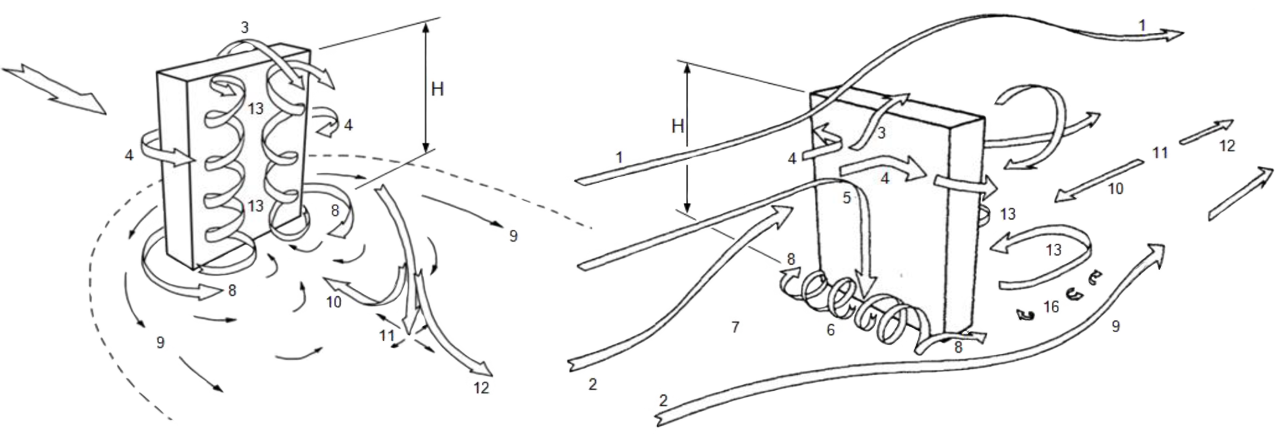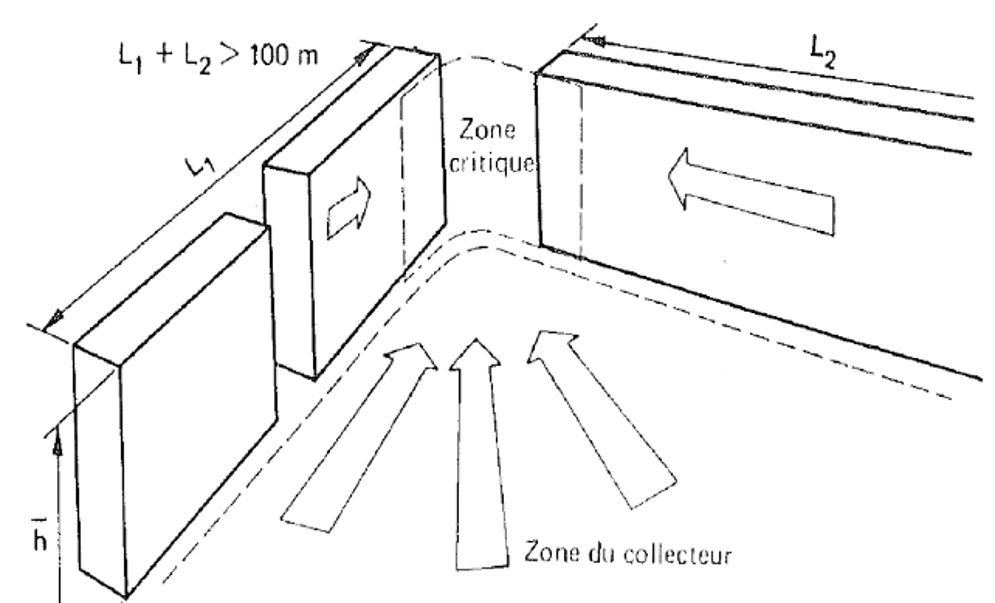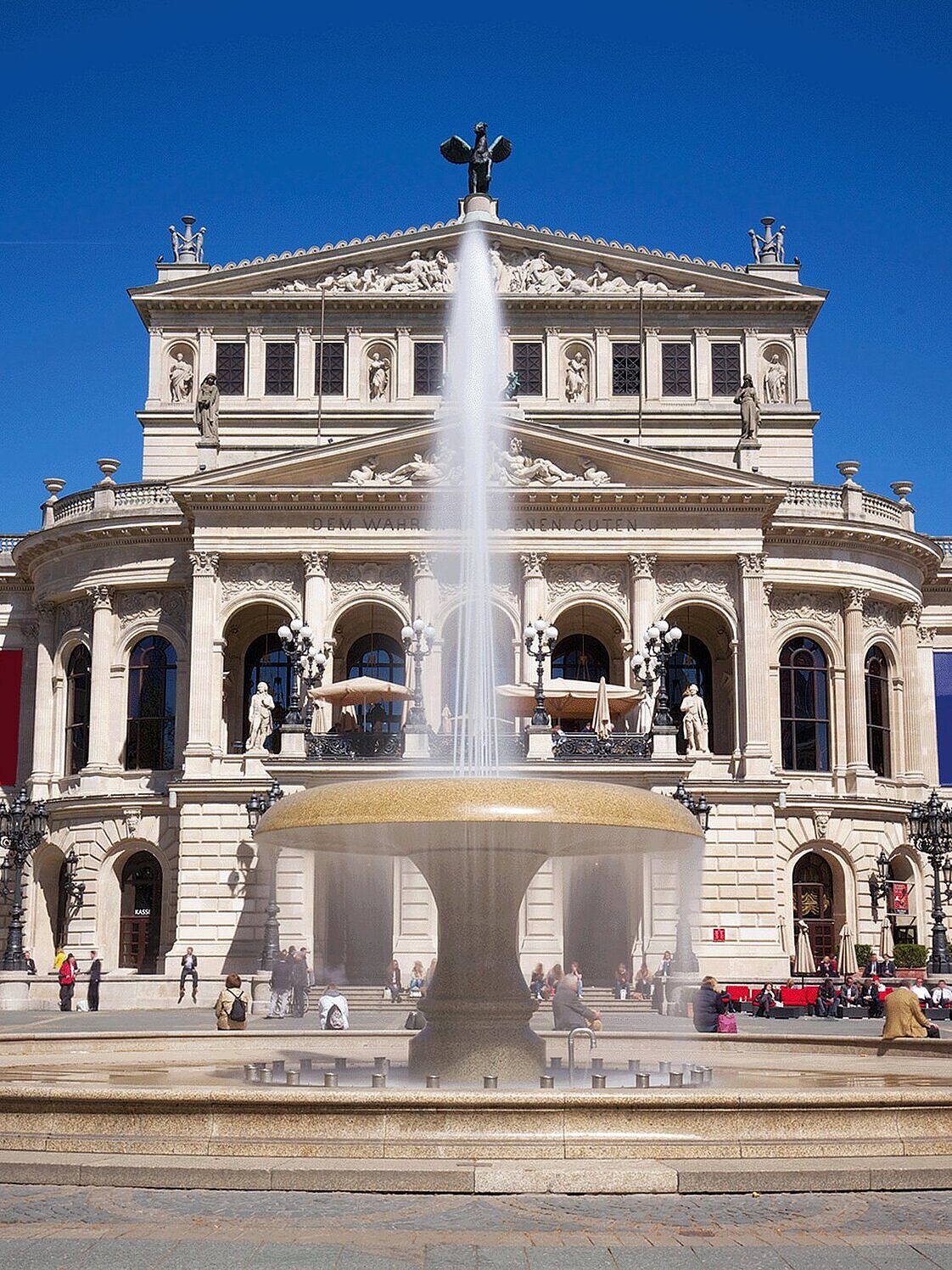Chapter content: The chapter provides an overview of the most important factors influencing the urban climate and the role played by bridges in this context
First of all, the result of the analyses on possible consequences of the Frankfurt bridges on the supply of cold and fresh air from the surrounding area is presented. In connection with this, the indirect positive effects of the bridges are described: they help to create living space without urban sprawl and excessive densification in the city.
It is then described how Frankfurt's bridges, both as a building and as a network structure, have an effect on various aspects that positively influence the urban climate: The bridges provide a transport landscape without pollutant emissions above conventional traffic with combustion engines; they create unsealed, irrigated areas and increase cooling shading in the city through the bridge's own corpus as well as indirectly through the irrigation of existing and additional urban trees.


